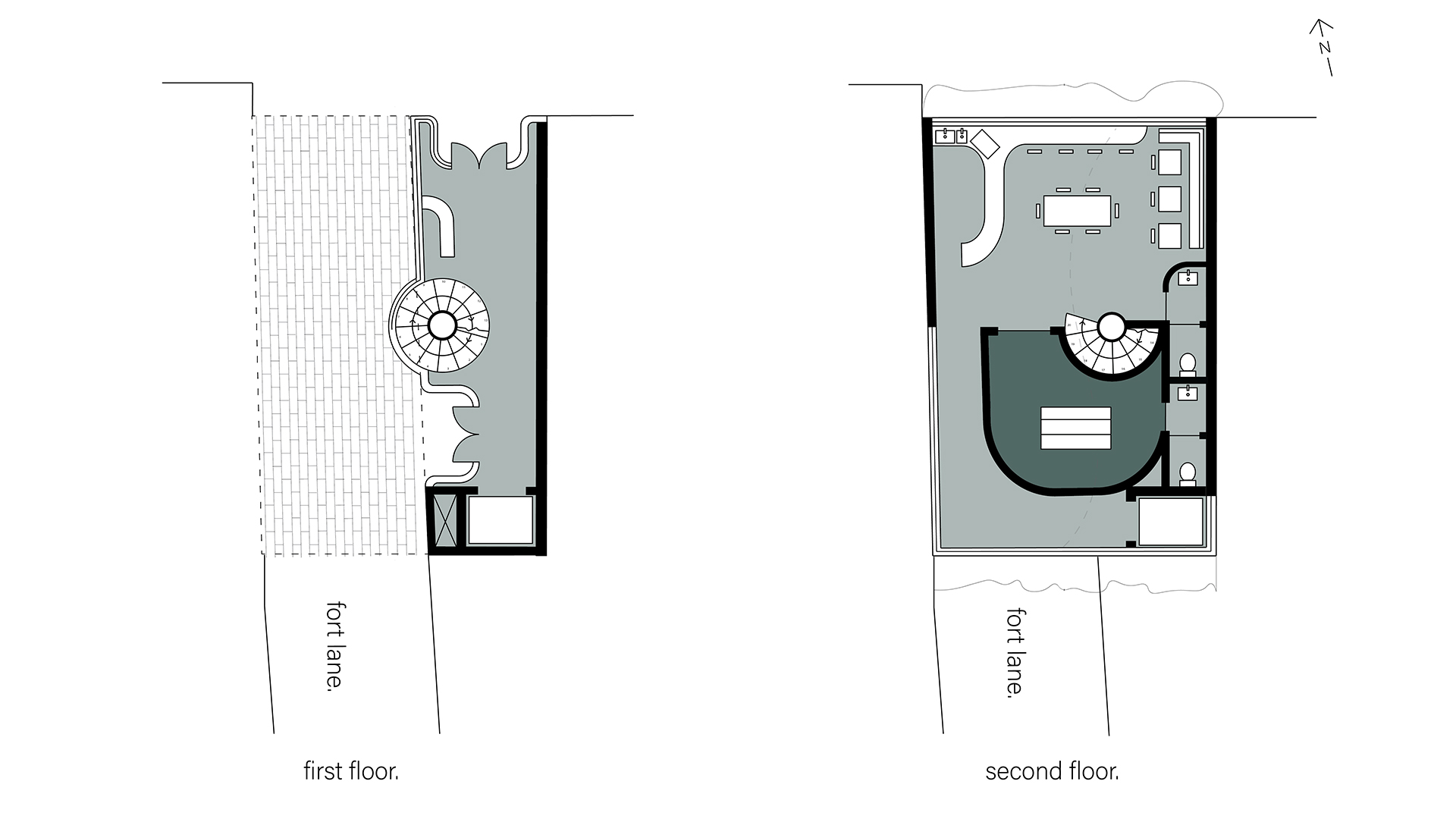
A Micro-Museum and Café for Fort Lane
The land which was formerly submerged underwater in the Waitemata harbour is now the home for a project designed around education and introducing aspects of the past back into the present. This café and micro museum encourages both tourists and residents of Tamaki Makaurau to learn about its history and geographical transformations, from the 1840s to today. The entire journey from beginning to end takes the public back in time and submerges them into the harbour with the help of wavy transparent textures, green lighting and an immersive learning experience. This experience will help people to form new relationships with the land, strengthen connections that already existed and restore the presence of the harbour that has been missing from Fort Lane for over 180 years.
Te One Panea takes its names from a nearby beach that marked the sites shoreline in pre 1840, now known as Fort Street. The project seeks to rebuild the connection the public has with both the land and the harbour. Through the use of light projections, careful interior and exterior material selection and surface design I have been able to create a unique experience that transports the public back in time and submerge them into the harbour.
The buildings two primary functions happen upstairs and are split into two parts of the journey. The café space is light and bright with lots of natural light, which passes through the exterior shell of the building and projects wavy tidal like patterns onto the floor as if you were looking down into the ocean from the surface. The micro-museum is a dark space. It has dark green lighting that create the effect that the viewer is submerged into the harbour.
The programming of the space is done according to the tide timetable and is displayed in Fort Lane using light projections. When it is high tide the light projections are at their brightest which indicates that there are events, guided tours and presentations occurring in the micro-museum. At low tide the lights are dimmed, the micro-museum is still open for people to come in and learn but is quieter and the café is the main attraction.
The colour palette of light blues and deep greens imitate the same colours found in and above the harbour. The outer shell is made from a slumped glass and is assembled in four separate pieces. The inner shell, exterior walls and interior walls are all made from a frosted bottle green glass which allows light to pass through while accentuating the underwater feeling by casting a green hue to the inside.




